Improve your Chipping

Chipping is probably the most under-rated skill in most golfer’s bag, and it’s arguably the most important. Just for reference, if the pros only hit 2/3 of their greens in regulation that means that basically, 6 to 9 times around, the best ballstrikers in the world will be chipping to get up and down. If you’re a single-digit handicap, you might chip 9 to 15 times a round, and for those of you who are 10 and up, you chip nearly every hole.
So why does it seem like when the range is full, and the putting green has folks on it, the chipping green almost always has a spot open? I’m not sure, but I hope that after you read this and think about it a bit, you might want to fill one of those empty spaces – it’s worth it. Chipping is a small version of the full shot, and it can teach you a great deal about ballstriking. Conversely, if you have trouble squaring up the club, or making solid contact on your chips, it’s probably something that is also true in your long game as well, or you have adopted a totally different swing for chipping.
If you have not read my post about the Role of the Left Arm, this would be a good time to look up that post. Jimmy Ballard’s main rule of connection is every bit as important on this shot as any other. The left arm has got to be on top of your chest with your elbow pointed toward the inside of your left hip socket, and the ground. From there, it simply rides on your chest to the right and then back to the left. If it moves from being connected to your chest, you quickly hinge your wrists, or you just swing your arms without moving your chest and shoulders, you change the club face, and you then have to find some way to manipulate the club, to get it square again for impact. For this post, we are describing a swing that is made with your shoulders and chest carrying and moving your arms and hands, not the other way around. And don’t forget one of Ballard’s great points- the left arm is always shorter, and the right arm is always longer, on the grip. Picture the way that a hockey player has his left hand near the butt of the hockey stick, and his right hand farther down the stick toward the blade. If you’re having trouble squaring up the clubface, split your hands a few inches, and you’ll get that feeling in a hurry.
Secondly, for chipping, your weight will stay mostly on your left side, and you will brace your right side to keep your weight more forward through the swing, but I also feel like I coil my chest against the resistance of my right leg, even in a chip. Also, your grip should be neutral as in your full swing, and your hands and arms should be very relaxed. They have to be relaxed to release the club head toward the target. This is not a time to hold off your release. Let that left arm fold through impact as it rides on your chest, and let that right arm lengthen down the target line until you are pointing at your target.
Once you are set up, you should look at your target, and imagine that you are tossing the club head to the target, like you would toss a medicine ball under-handed toward a horseshoe pit. Make a few practice swings, brushing the ground with your club, and feeling like you could toss the club head the distance to where you want the ball to land. As your shoulders and chest move to the right, and then back to the left, stay very level, and don’t dip towards the ball. Move into the position of your stance, take one more look at the target and toss the club through the golf ball. You don’t need to think about ‘hitting’ the ball, just simply toss the club head and let the ball get in the way.
Practice with different clubs, and try out different balls to see how they respond. Familiarity with 8 iron through 60 degree wedge takes practice to know how far they all will go with the same effort and swing. And also pay attention to the height, spin and roll that the different clubs and balls give you. As you get the feel, you will begin to ‘see’ these shots during a round, and your brain will let you know, ‘this looks like the distance that my 8 iron will roll’ or ‘this looks a spot where I could toss my sand wedge and it would stop near the hole.’ And you’ll also begin to see where some of the more expensive balls could help your rounds as you improve. Generally, they have a much greater ability to check up after a chip, and you will see your ability to stop a ball on a hard and fast green improve dramatically.
Your eyes are your best friend, when they are used with your brain’s imagination and ability to picture a shot. Get into your setup, make a few practice swings, and use your arms connected to your chest to toss that ball where you’ve been looking; you’ll see a lot more roll around and into the cup. When I practice, I try to chip until I’ve made one or two before I move on. It really builds confidence for your round.


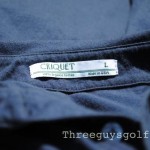
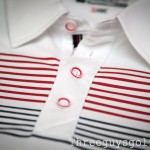






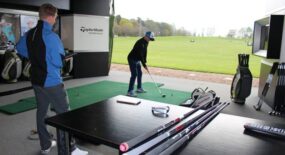





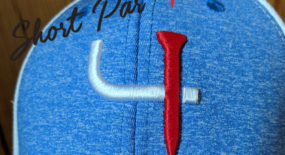

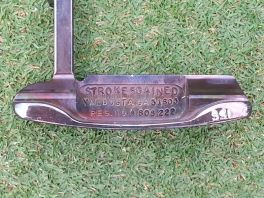
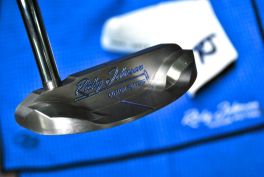


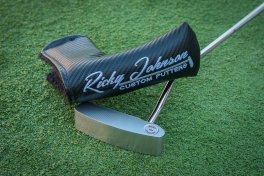
I will try your method and give you feedback.I enjoyed your narrative and video.
Thanks, Mike. I’ll look forward to your thoughts and experiences as you give this a try. It can be challenging for folks at first to stop trying to get the hands ahead and drag the club through impact, while trying to hold the face open. I have chipped and pitched that way, but there are a variety of reasons that I don’t use that method anymore. This method is consistent with how we swing the club with every club in the bag– from putter to driver. I square the club up the same with every shot, and it’s never by changing my hands and wrists. For me, it’s more consistent, easier on my body, and I get to use my legs, core and shoulders to simply make an underhand tossing motion. My misses are much less of a problem, and I’m able to make a good athletic move at the ball time after time.